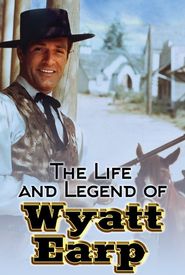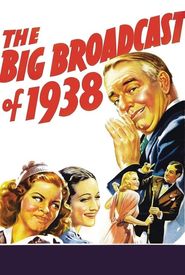Frederick Hazlitt Brennan, a remarkable individual, was born on September 23, 1901, in the vibrant city of St. Louis, Missouri, to Jesse K. (1865-1936) and Mary Sharpe Brennan, his devoted parents.
The Brennan family was deeply rooted in the Episcopalian faith, with his father and brother, Jesse K. Jr., serving as esteemed ministers of the cloth.
Brennan's educational pursuits took him to the University of Missouri, where he initially enrolled, although his academic journey was truncated after a brief stint, as he opted to trade his textbooks for a career in journalism.
Specifically, he found employment with the esteemed St. Louis Globe-Democrat, where he swiftly rose through the ranks, becoming a skilled rewrite man and political reporter, laying the groundwork for a distinguished writing career.
Brennan's illustrious professional odyssey began in the year 1923, marked by a pivotal moment in his career as a multifaceted journalist, where he embarked on a journey with the prestigious St. Louis Post-Dispatch, assuming a diverse array of responsibilities that showcased his remarkable versatility and adaptability.
Noted journalist Brennan made a profound impact on the realm of investigative journalism during his tenure at the esteemed Post-Dispatch, authoring a groundbreaking exposé that brought to light previously obscured details surrounding a murder investigation. This meticulous and painstakingly researched piece of journalism ultimately led to a major breakthrough, resulting in the issuance of indictments against a high-ranking circuit attorney, an assistant prosecutor, four esteemed lawyers, and an attaché of the district attorney's office.
Brennan's report had a profound and extensive influence, significantly contributing to the downfall of the judge who had presided over the case, whose subsequent electoral defeat was a direct result of the report's revelations.
As the decade of the 1920s drew to a close, Brennan made the bold decision to leave behind the world of newspaper journalism, opting instead to pursue a fresh and exciting career path. This marked the beginning of a new chapter in his professional life, as he transitioned into the realm of scenario writing for several renowned film studios.
Among the prominent studios that Brennan had the privilege of working with during this period were Metro Golden Mayer, Fox Films, and First National Films.
As the 1950s unfolded, a transformative era in television's development, he embarked upon a remarkable creative odyssey by launching his writing career on the small screen, thereby ascending to the prestigious position of chief writer on the trailblazing ABC series, The Life and Legend of Wyatt Earp, which made its television debut in 1955, a momentous year in the medium's history.
William Brennan, a celebrated author of great repute, has made a profound impact on the literary world through his extensive and varied body of work. One of his most notable and enduring creations is the 1927 publication "God Got One Vote", a groundbreaking and thought-provoking masterpiece that has generated considerable controversy and intellectual fervor among scholars and the broader public alike.
As the years went by, Brennan's literary prowess continued to flourish, yielding an impressive array of remarkable literary masterpieces that left an indelible mark on the world of literature. One such masterpiece was "The Matron's Report", a gripping novel that expertly probed the intricacies of human relationships and societal norms, offering a profound exploration of the complexities that underpin our daily lives.
During the 1930s and 1940s, Brennan's literary output was marked by the publication of several notable works, which not only showcased his remarkable versatility as an author but also underscored his ability to tackle a diverse array of themes and subjects with remarkable facility.
His 1937 novel, "One Young American", stood out as a particularly notable work, offering a nuanced exploration of the complexities of the human experience, while his 1941 novel, "The Sin of the Father", demonstrated his capacity to grapple with the weighty and often fraught themes of morality and redemption.
Meanwhile, his 1936 novel, "The Manager", served as a testament to Brennan's skill in crafting compelling narratives that effortlessly navigated the intricate web of human relationships, revealing a mastery of the art of storytelling that was characteristic of his work during this period.
Through these notable works, Brennan was able to demonstrate his remarkable range as an author, effortlessly transitioning between genres and themes, and solidifying his reputation as a writer of exceptional talent and versatility.
During the early 1940s, a pivotal period in literary history, a trio of remarkable works emerged, marking a significant milestone in the career of the esteemed author, Brennan. These three notable publications, namely "They Sell Sailors Elephants" (1941),"The Wookey" (1941),and "Memo to a Firing Squad" (1943),collectively demonstrated Brennan's remarkable aptitude for crafting narratives that not only captivated readers but also tackled complex and intellectually stimulating themes, thus cementing his reputation as a masterful storyteller.
The post-war era witnessed the publication of "Smith's Life of Jones" in 1949, a profoundly moving and introspective literary endeavour that delved into the intricacies of human connections and the human experience, offering a poignant and thought-provoking exploration of the complexities that underlie our very existence.
This groundbreaking work was followed by the release of "The Irish Lullaby" in 1950, a testament to Brennan's remarkable storytelling prowess and his ability to craft words that resonate deeply with readers.
Furthermore, "One of Our H-bombs is Missing" published in 1955, solidified Brennan's reputation as a masterful storyteller, weaving a narrative that not only captivated readers but also showcased his impressive linguistic skills, cementing his status as a talented wordsmith.
The extraordinary literary accomplishments of this renowned writer serve as a lasting tribute to his remarkable aptitude and his enduring stature as a venerated literary figure, a testament to his ability to craft works of enduring value that continue to captivate and inspire audiences across generations.
It was the year 1948 when Brennan embarked on a groundbreaking artistic venture, taking on the monumental task of crafting the libretto for the operetta Magdalena, a collaborative masterpiece that brought together the creative genius of Brennan himself and the renowned Brazilian composer Heitor Villa-Lobos, resulting in a work of immense cultural significance.
On the final day of the year, December 31, 1937, a calamitous and life-altering automobile accident befell Brennan, occurring in the vicinity of Wickeburg, Arizona, a location that would forever be etched in his memory as a symbol of tragedy. The catastrophic event had a profound and lasting impact, resulting in the untimely and senseless loss of two innocent lives, leaving Brennan and his wife to confront the stark reality of the devastating consequences that had unfolded before their eyes.
Brennan's wife
Brennan and his wife, both victims of a devastating accident, underwent a grueling 30-day hospitalization at a Phoenix area medical facility, leaving them with a plethora of physical and emotional scars. Upon their eventual release from the hospital, they made the difficult journey back to their home, where they embarked on the arduous and lengthy process of recovery, undoubtedly facing a daunting and challenging road to rehabilitation, as they struggled to regain their strength, both physically and emotionally.
The profound and far-reaching consequences of Brennan's catastrophic injuries, tragically compounded by the loss of two precious lives and the severity of his wife's own injuries, would undoubtedly have left an indelible mark on both individuals, forever reshaping the trajectory of their lives in a manner that would be felt for years to come.
---
Biography:
Brennan's life was forever changed on that fateful day, as the devastating consequences of his injuries, coupled with the loss of two lives and the severity of his wife's injuries, would leave a lasting impact on both individuals, forever altering the course of their lives.
Frederick Hazlitt Brennan, a man of extraordinary importance, met an untimely and devastating demise on the thirtieth day of June, in the year nineteen hundred and sixty-two, at his secluded Hidden Valley residence, where he took his own life using a.38 caliber revolver, a tragic and senseless act that would leave a lasting impact on those who knew him.
This heartbreaking event was allegedly committed due to a crippling sense of despair, fueled by his ongoing struggles with diabetes, a recent heart attack, and the overwhelming pressures of his professional life, which had taken a significant toll on his mental and physical well-being.
Despite his many accomplishments and contributions to his field, Frederick Hazlitt Brennan's life was marked by a deep sense of sadness and desperation, which ultimately led him to make the devastating decision to take his own life.
Noted linguist and conceptual innovator, this remarkable person is frequently recognized for originating the term "ergophobia," a term that succinctly captures the essence of an irrational and intractable phobia of engaging in productive labor.



































